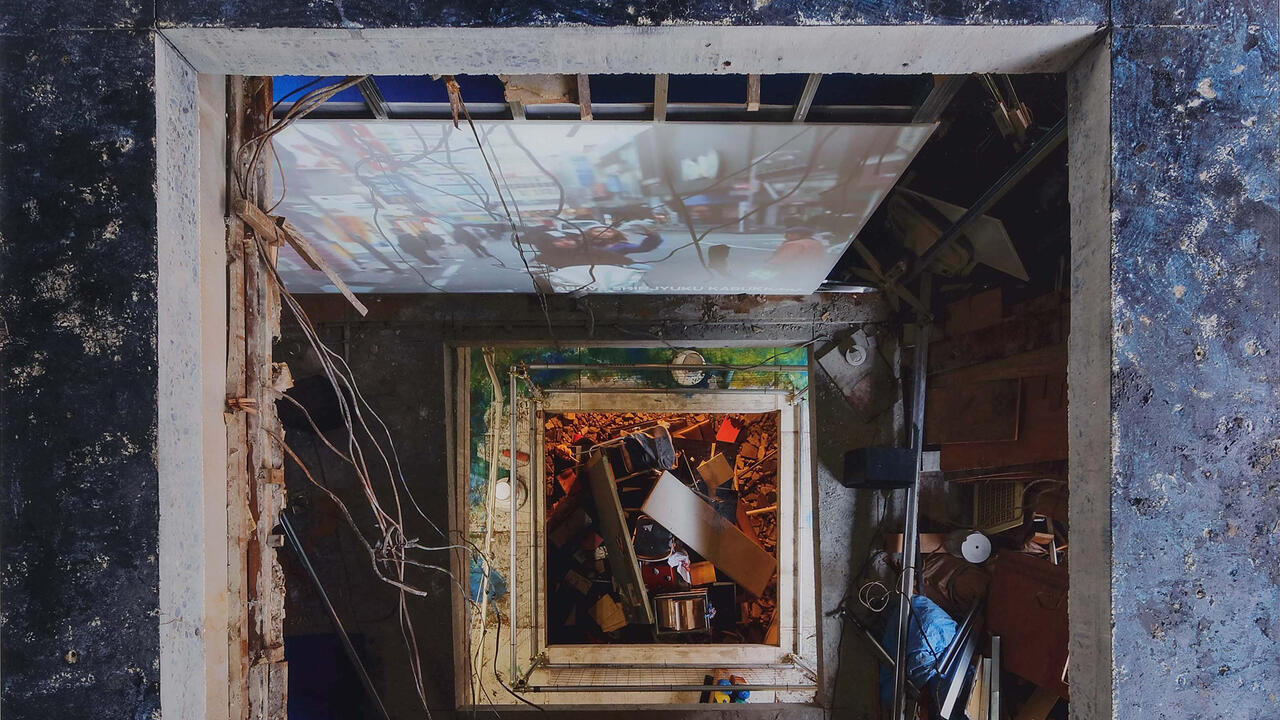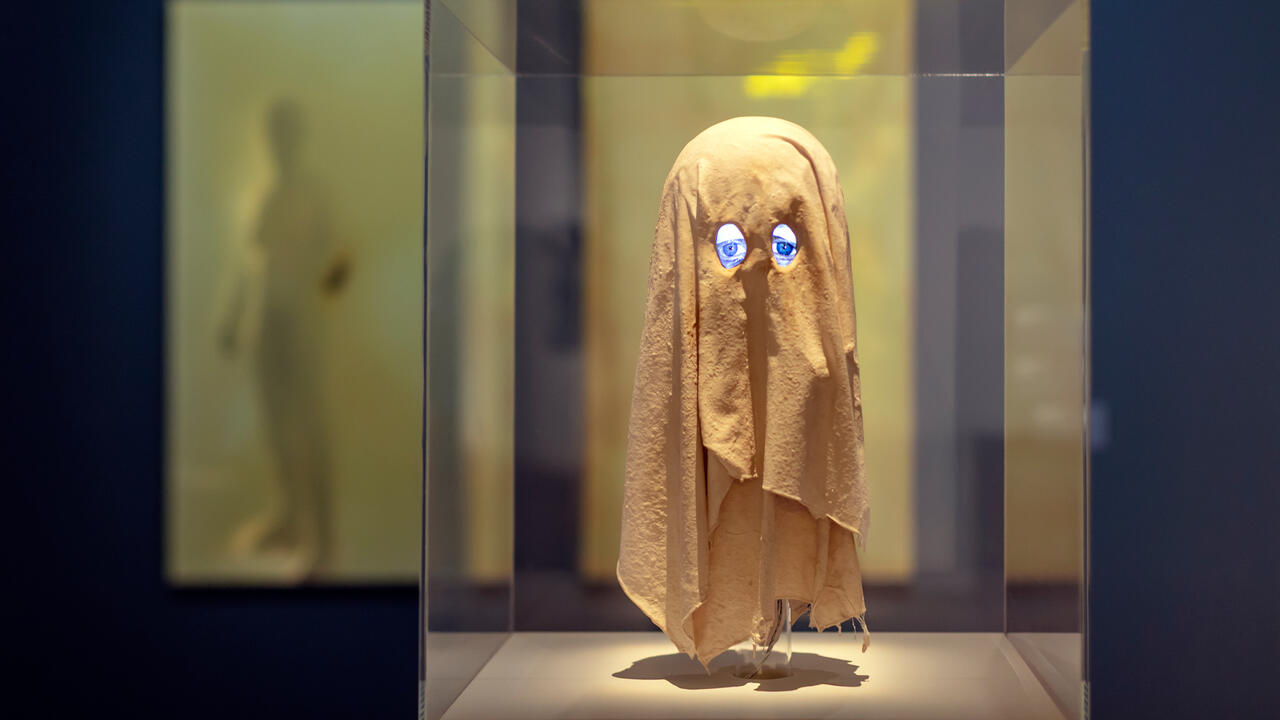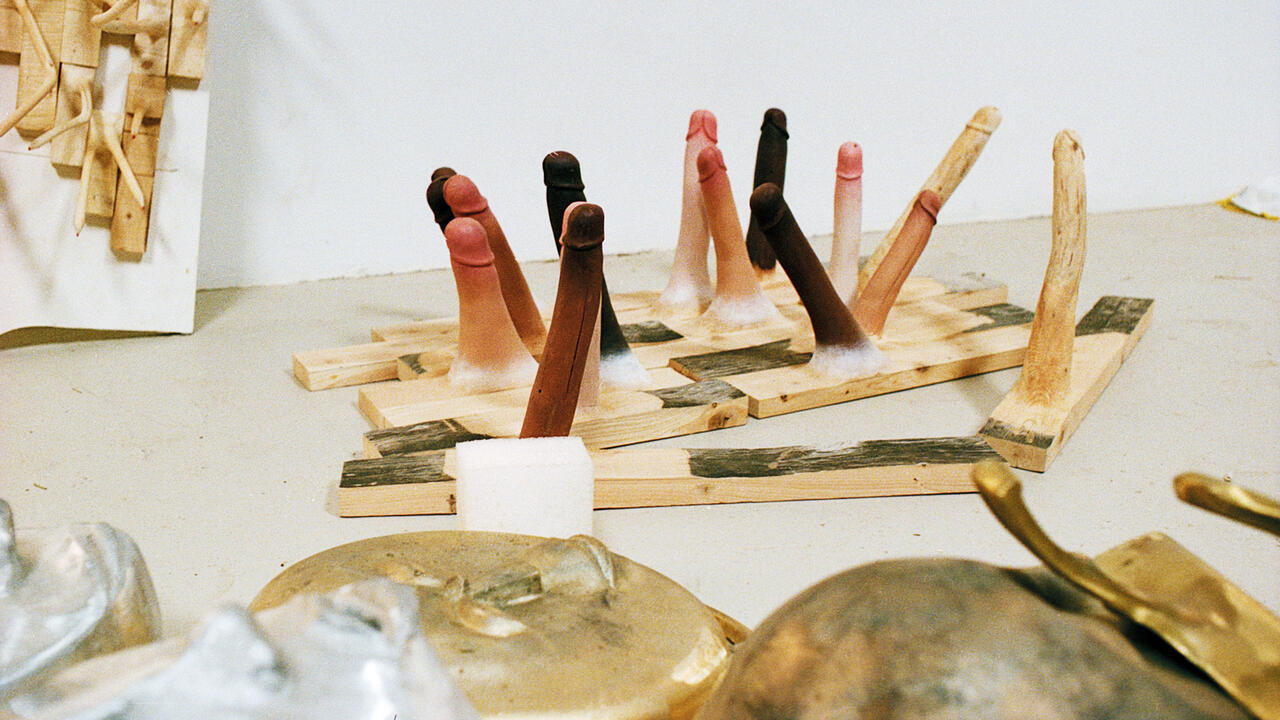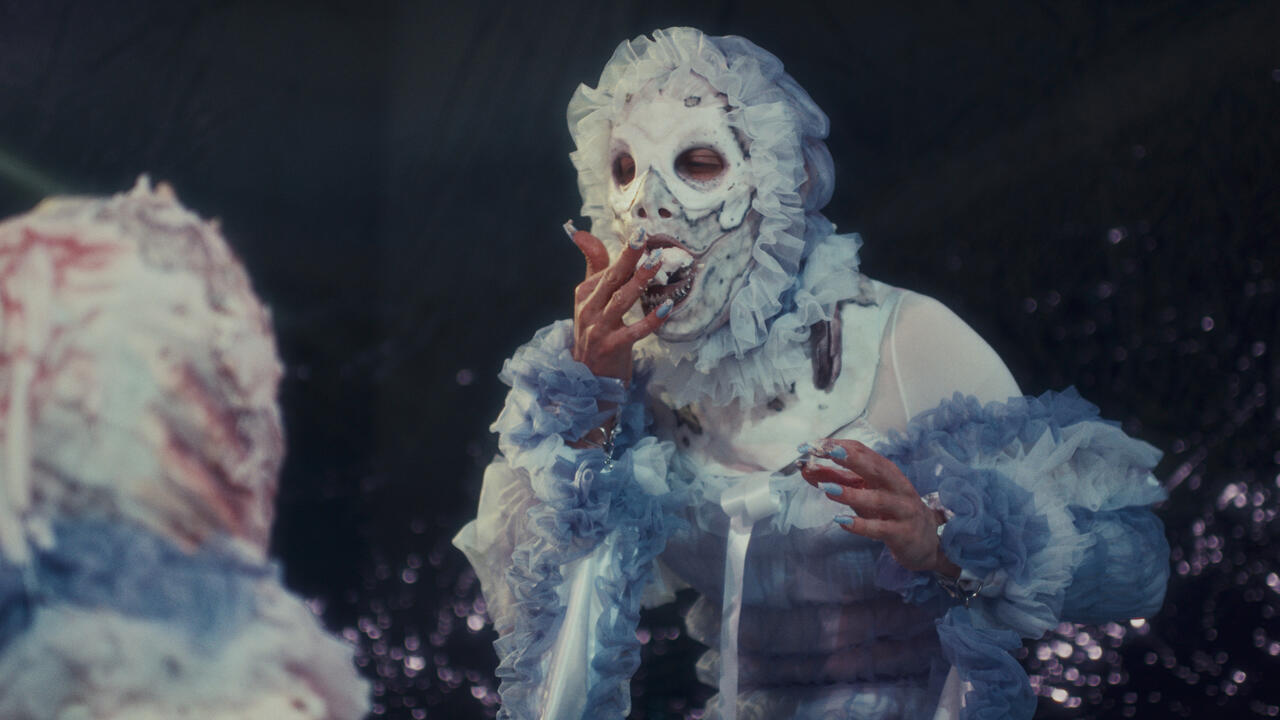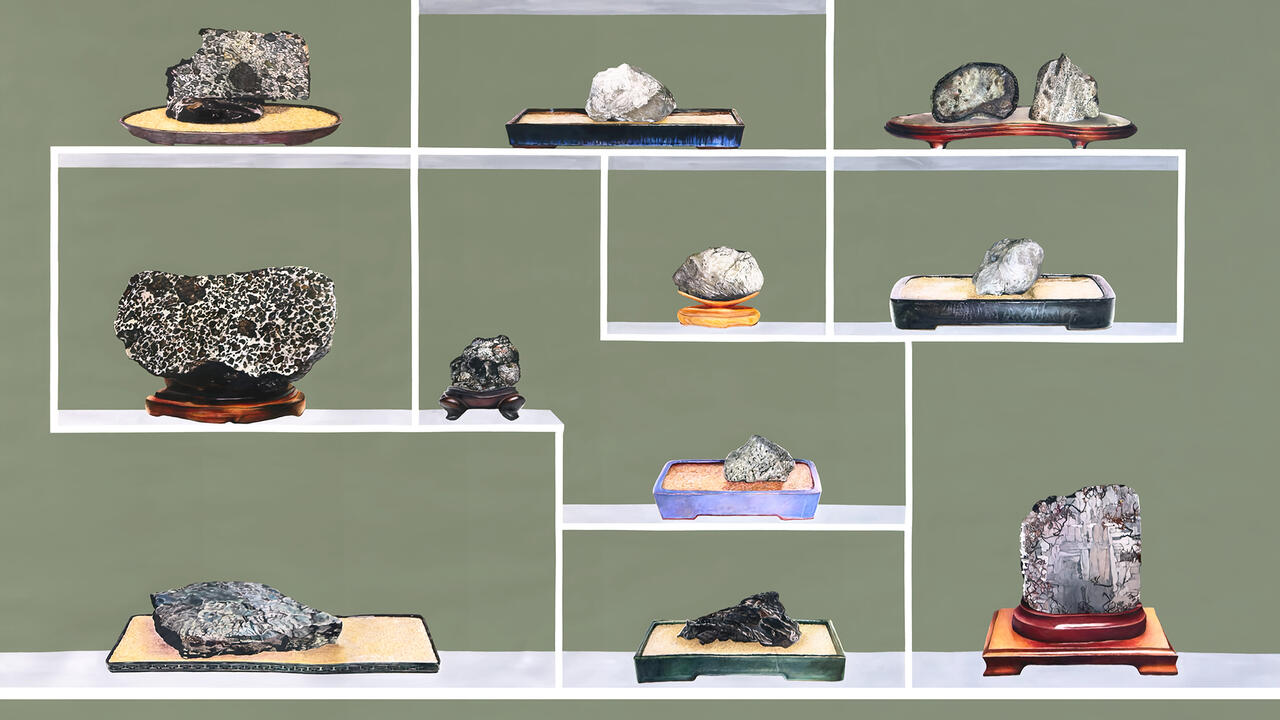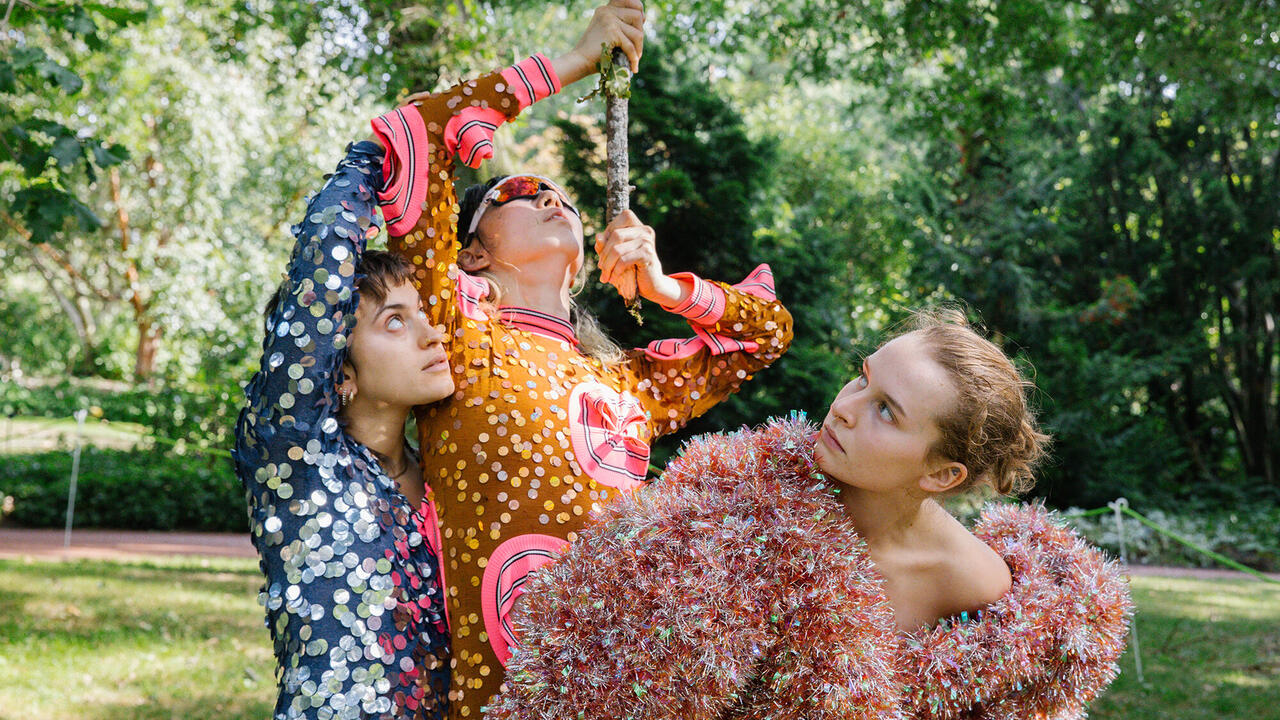Critic’s Guide: Edinburgh
From an inflatable anti-capitalist dragon to the shattered shadow of Robert Burns: highlights from this year’s Edinburgh Art Festival
From an inflatable anti-capitalist dragon to the shattered shadow of Robert Burns: highlights from this year’s Edinburgh Art Festival

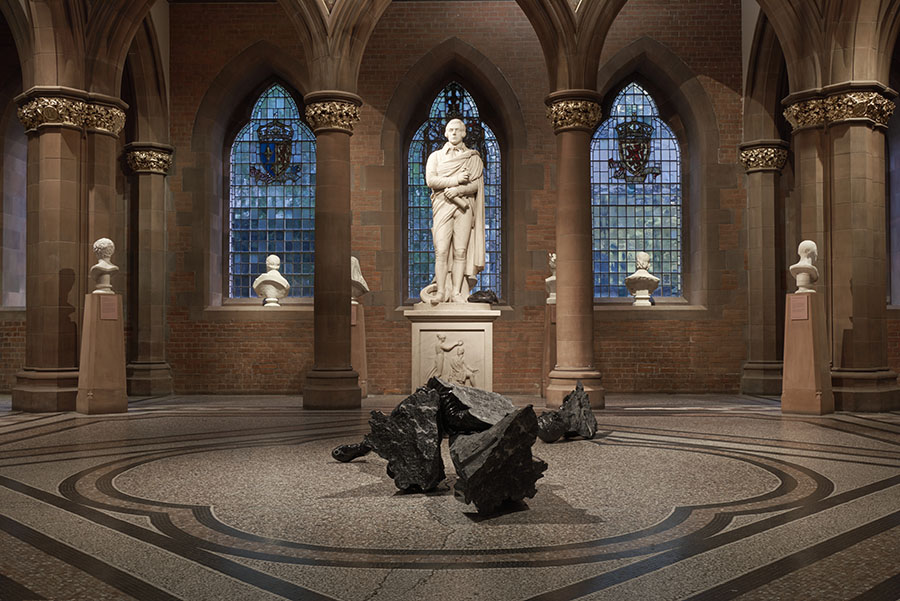
Douglas Gordon, Black Burns
Scottish National Portrait Gallery
29 July – 29 October 2017
The 150-foot Melville Monument – commemorating Henry Dundas, 1st Viscount Melville – in Edinburgh’s St Andrew Square, was targeted by activists last year, who superglued on a new plaque to acknowledge the full extent of Dundas’ brutality (his opposition to the abolition of slavery, his use of the military to enforce the Highland clearances). This continues a spate of renewed iconoclasm surrounding our blood-soaked monuments to the past, but in his new piece for the Scottish National Portrait Gallery, Black Burns (2017), Douglas Gordon turns this spirit of statue-toppling, a counter to the reproduction of power through monuments, onto an unlikely figure: Robert Burns. Responding to John Flaxman’s 1824 statue of the bard that dominates the gallery’s great hall, Gordon reproduces it in black marble, and then ‘breaks the spell’, blasting it off its pedestal into glassy shards. Beneath Flaxman’s rendering of Burns now lies its broken shadow, its head lopped off, and legs sliced open to reveal the marble’s crystalline interiors. Rather than simple erasure, Gordon’s violation has created a counter-monument which liberates the bard from the pomposity of national treasure.
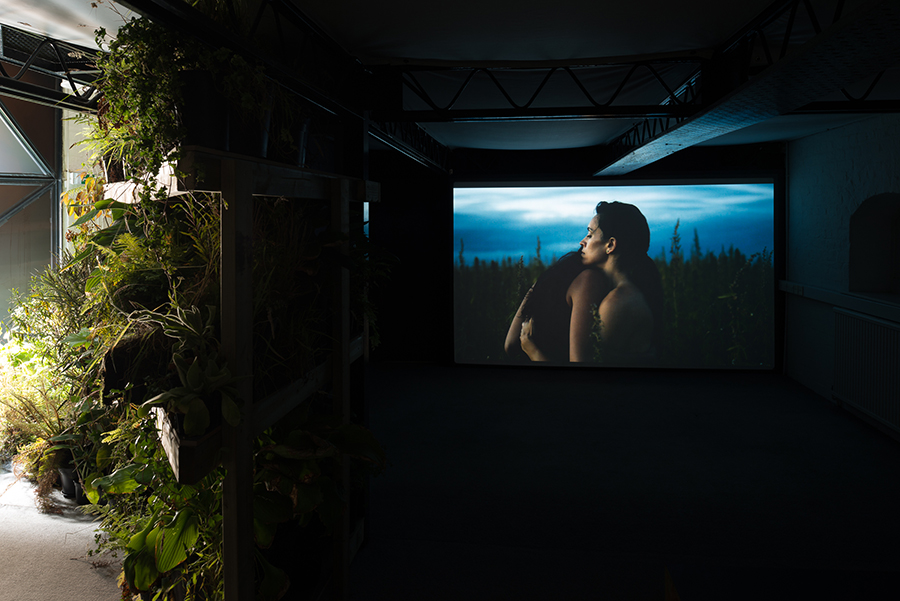
Shannon Te Ao, ‘With the sun aglow, I have my pensive moods’
Gladstone Court
27 July – 27 August 2017
A former Magdalene Asylum for ‘fallen women’ has been robed in darkness, and piled high with creepers and weeds, the smell of vegetation hanging in the air. In Shannon Te Ao’s installation ‘With the sun aglow, I have my pensive moods’, commissioned for the Edinburgh Art Festival, the New Zealand artist begins to intone a 19th-century lament for a Māori princess afflicted by leprosy (a disease which arrived with white colonial settlers), his heavy voice flecked by drones and the rustling of foliage. On the ground floor, a film centres on two figures slowly revolving, locked in embrace, while an iron staircase tumbling with overgrown plants leads up to a second video piece: here, black-and-white footage tracks electricity pylons criss-crossing across a barren New Zealand landscape, and herds of cattle encircling an old Māori burial ground. Te Ao’s work is composed of a complex set of gestures – managing to incorporate references to a 1970s Charles Burnett film and traces of a 1960s Clyde Otis song among many other things – but ultimately draws its achingly beautiful power from Māori lyric traditions, that of whakataukī (proverb) and waiata (song), to touch on sensations of fading and longing. The densely packed installation of plants between the two films literally crafts darkness with time: the complete deprivation of light brings the plants’ lifecycle to the fore, as they submit to the removal of photosynthesis.

‘Daughters of Penelope’
Dovecot Studios
20 July 2017 – 20 January 2018
When Chris Ofili wanted to translate the liquid qualities of his watercolours into woven wool for his current exhibition ‘Weaving Magic’ at London’s National Gallery, he turned to the master weavers of Dovecot Tapestry Studio – a project that became nearly three years in the making. Looking out over Dovecot’s working floor, I can see the giant looms which held Ofili’s The Caged Bird’s Song (2017), as well as the finishing touches being put to a new monolithic commission: a rug commissioned by the Perse School that draws on the paintings of Victoria Morton. Heading downstairs to the exhibition space, ‘Daughters of Penelope’ surveys the historic relationship between women artists and Dovecot: there’s a strong sense of place ever present, from Moss circle/square (2010) in which Caroline Dear draws on her training in basket weaving, picking out grasses from her home on Skye which she dries and knots into tactile, perishable grids, to Naomi Robertson’s Kantha Diaries (2011) produced after a trip to west Bengal, absorbing Kantha quilt designs into blue-white reproductions of daily rhythms, or a rug, Untitled (2013) created by Julie Brook and Dovecot, that mimics the gradations of tone in the British artist’s burnt ochre pigment drawings, picked up while travelling through deserts in Libya and Namibia. The standout piece is Linder’s Diagrams of Love: Marriage of Eyes (2015), produced in partnership with Dovecot’s rug tufters for the ballet Children of the Mantic Stain (2015) – the rug constitutes the ‘eighth dancer’: drawing on 1970s carpet designs, the piece takes on a coiled pose, patterned with turquoise eyelashes and a lush gold belly.

Zoe Walker and Neil Bromwich, The Dragon of Profit and Private Ownership
Trinity Apse
27 July – 27 August 2017
Zoe Walker and Neil Bromwich have crafted a giant inflatable dragon out of olive waxed-cotton panels, stitched it with the phrases ‘Profit & Private Ownership’ and ‘Corporate Greed’, and left it in the Gothic kirk of Trinity Apse. The collaborative duo dip into what they term the ‘popular imaginary’, and their naive utopian creations often blur the line between revolutionary cosplay and a prefigurative radical politics. Previous performance pieces include Love Cannon (2005-06) in which they wheeled out a phallic pink cannon into a public procession and fired off balloons carrying expressions of love, and the inflatable mountain range complete with emergency slides in Friendly Frontier (2003-05). Their piece The Dragon of Profit and Private Ownership (2017) commissioned for the festival is a similarly playful take on the visual culture of protest and folk traditions, inspired by a Northumbrian miners’ banner design from 1924 (the dragon emerged as a motif in 19th-century radical pamphlets). A small video installation housed in a red tent documents Walker & Bromwich’s performance piece By leaves we live… not by the jingling of our coins (2017), in which the dragon is paraded through the streets of Edinburgh, accompanied by maypole dancers and spearthrowers.

Pablo Bronstein, The Rose Walk
Jupiter Artland
28 July 2017 – permanent commission
Jupiter Artland, nestled in the grounds of the 17th-century Bonnington House on the outskirts of the city, is the costly creation of collectors Robert and Nicky Wilson (the former is chairman of the homeopathic company Nelson, naturally). It’s a decidedly weird sculptural theme park – from the huge swirling earthworks designed by Charles Jencks, to a 12-metre-high Marc Quinn, each piece exists as an alien intrusion on the landscape; the latest artist to join them is Pablo Bronstein. The Rose Walk (2017) constructs two ten-metre-high pavilions, each decorated in a Gothic and Chinoiserie style, and joined with a rose garden. All of Bronstein’s ticks are embedded in the installation: his interests in stage-craft and facades, the twisting compressions of time and history, the balletic fluttering of dancers mirroring the architecture’s curlicues. On the sunny July afternoon I visit, the crowds are clearly in love with the piece. But, I feel, Bronstein’s interrogations of institutional power and space – ever present in his ink-and-dip-pen drawings and choreographed performances – have evaporated away, and this (madly) pretty folly in bridal white leaves you speculating about the commissioning intent.

‘Plant Scenery of the World’
Inverleith House
29 July – 29 October 2017
Treading barefoot across Laura Aldridge’s nature-printed carpet at Inverleith House feels almost therapeutic after the excess of Jupiter Artland. Here, the artist takes a diaristic process, collecting detritus from the glasshouses of the Royal Botanic Garden, and then submits them to an eco-dye process: the plant matter is wrapped in soft cotton along with rust, vinegar, and soy as stimulants, and left in a steam bath for a month until their forms and timbres begin to stain the cloth. Beneath this intimate piece, there’s a storm of internal politics behind Inverleith House’s new show ‘Plant Scenery of the World’. After the decision taken last year by the Royal Botanic Garden (which owns Inverleith House) to close the space as a dedicated contemporary art gallery, this exhibition marks a new remit for the gallery to showcase artists responding to the botanic collections, after months of public outcry.
All the nastiness aside, it’s an intelligent show with enough self-critical distance, charting the deep symbiosis between histories of botany and imperial expansion, and the archival fantasies of order that persisted long after empire’s coherence had crumbled. Charlie Billingham has papered a room in a print of lily pads and carp, dropped in pots carrying aspidistras, ferns and palms, and deployed a folding screen that appropriates rude scenes and figures from 18th-century satirist James Gillray, cropping and recolouring them. The Victoriana vibe continues in grotesque botanic illustrations of ‘corpse plants’, archival plans for the glasshouses, an 1858 series of paintings by RK Greville who drew tropical scenes for British audiences (despite never even leaving Scotland), and a room upholstered in a cartoonish saffron linen, with Oliver Osborne’s forensic paintings of rubber plants lining the walls. A cluster of Bobby Niven sculptures sits to one side: seed pods and husks cast in bronze, and a tree trunk sprayed in concrete – nature encased in artifice, for isn’t that exactly what a glasshouse is?

Charlotte Barker, ‘Flotilla’
Edinburgh Sculpture Workshop
29 July – 26 August 2017
Moon jars began to emerge in Korea from the late 17th century: storage vessels of milky white porcelain, joined imperfectly at the centre (linking two hemispheres), they also carried other small distortions from drying and kiln processes – these ‘imperfections’ converged with philosophies of nature and individuality. Potter Bernard Leach brought a moon jar back to Britain in 1920, and the east Asian traditions filtered through his work at the Leach Pottery in St Ives have imprinted themselves on British ceramic production. In her new exhibition at Edinburgh Sculpture Workshop, Charlotte Barker appropriates the tradition in pieces that foreground the interplay between nature and craft: she chooses to mould her moon jars by hand, layering coils and patterning the globes with a rain of finger gestures, before covering them in a graphite-black porcelain slip. Barker places these bulbous cauldrons precariously atop wafer-thin slivers of wood, with polished surfaces and natural undersides, and sets them loose across the gallery: accompanied by press-moulded leaves mounted on the wall, the effect is of clusters of inverted landscapes carving through the exhibition space, shimmering under streams of daylight.
Main image: Walker and Bromwich, The Dragon of Profit and Private Ownership, 2017, installation view. Courtesy: Edinburgh Art Festival








